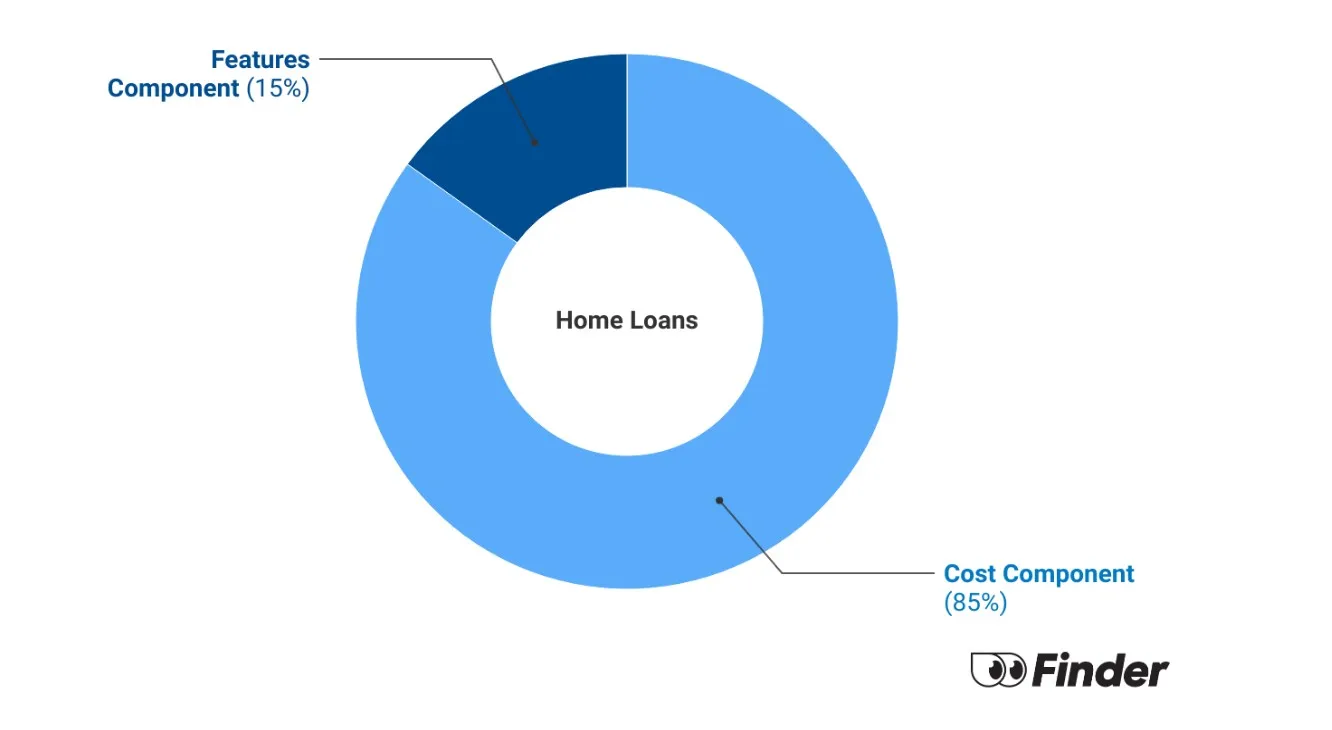Getting a home loan with a redraw facility makes the loan a lot more useful as a financial product. You can put extra money in there and pull it out to spend just like money in a bank account.
It's a great mortgage feature but access to redraw money can be limited and depends on your loan and the lender's rules. Redraw is different to an offset account and doesn't give you the same level of control over your cash.
Here's what you need to know about home loan redraw.
What is a home loan redraw?
Many home loans, especially variable rate home loans, let you make extra repayments on top of your required monthly repayment amount. If the home loan also has a redraw facility then the loan allows you to withdraw (or redraw) some of the extra repayments you've made and spend them as you need.
As long as you make extra repayments, you can use this money in your home loan like it's money in a savings account. Some lenders give you easy access to this money via a card or app, but there may be limits to how much you can access and there may be redraw fees.
A redraw facility makes your home loan a more flexible and useful product because you can save and spend with it. And any extra repayments on your loan also lower how much interest you pay.
Does every home loan have a redraw facility?
Not every home loan offers redraw, although it is a fairly common loan feature. Redraw is more common on variable home loans and less common on fixed rate loans. Not every loan allows you to make extra repayments in the first place, let alone redraw them.
Always check the details of a home loan online and read your loan contract carefully to make sure the loan has a redraw if you want one.
The benefits of home loan redraw
 There are two major benefits to home loan redraw: paying less interest and having access to your cash.
There are two major benefits to home loan redraw: paying less interest and having access to your cash.
Extra repayments means less interest
One is that any extra repayments you make on top of your monthly repayments lower the amount of interest you pay. This is because you're paying the loan off faster.
Let's say you have a $550,000 loan amount over 30 years and your interest rate is 2.00%. Your monthly principal and interest repayments would be $2,032 a month.
But if you paid an extra $100 a month from the start of the loan term you'd repay the loan in 28 years and one month rather than 30 years and you'd save $12,387 in interest.
Spend the money when you need it
Redraw allows you to make extra repayments and therefore pay less interest while also giving you the option to spend this money if you need it. Now of course, if you spend your extra repayments you lose the full benefit of paying less interest.
But even if you save up the extra repayments for a few years and then redraw some of it, you still pay a little less interest.
A redraw facility makes your home loan a more flexible mortgage product for saving and spending while enjoying the benefit of extra repayments.
But there are some downsides to a redraw facility.
Money in a redraw technically belongs to your lender
Another downside to home loan redraw is that extra repayments aren't your money. Once paid, the money belongs to your lender. A redraw facility means that your lender allows you to take the money back out.
This is a disadvantage because lenders have different rules about redraw. A lender may stipulate a minimum or maximum redraw amount per month. This gives you less control over the money. Lenders may also charge fees or require you to redraw online only (some lenders, especially online lenders, don't have bank branches).
And your lender can restrict your redraw access in any way they want. A few years ago the Commonwealth Bank made headlines when it announced that it was going to slowly reduce the amount of extra repayments a borrower can access over time to ensure that the loan is repaid. In effect, this meant that a borrower couldn't access 100% of their extra repayments.
ME Bank announced something similar but abandoned the plan due to customer outrage.
A redraw facility is not the same as an offset account
A 100% offset account is a similar mortgage feature to a redraw. You put money in the offset account and it reduces your interest charges exactly like extra repayments. And you can spend the money in your account any way you like. This is similar to redraw.
But an offset account is better than a redraw facility. The money in an offset account is your money. Your lender can't restrict your access to it and they can't gradually reduce the amount of it you can access (although the lender can charge a fee for the account). You enjoy all the protections and accessibility of a bank account.
Money in an offset account is usually guaranteed by the federal government's deposit guarantee in the event the lender goes bankrupt. But this is limited to $250,000 and it depends on your lender, so always check the fine print on your mortgage contract.
Learn more about redraw versus offsets
How do I access money from my redraw?
Every lender lets you access extra repayments differently. A lender may have a banking app, meaning you can easily spend the money or move it around.
Some lenders have an online banking platform but not an app, which functions in a similar way but is a bit less convenient. If you do all your banking with your lender then transferring money to or from your redraw should be quick. But if you bank with one institution and have your home loan with another then moving money between the two can take a day or two, maybe more.
Your lender may issue you with a bank card you can use to access money in your offset or redraw.
Do fixed rate home loans come with redraw?
Fixed rate loans are less likely to allow borrowers to make extra repayments and redraw them. But it is possible to find fixed rate loans that do. Many fixed rate loans may allow you to make extra repayments up to a certain limit, such as $10,000, during the fixed period of the loan. If the loan also has redraw you could therefore save and later redraw no more than $10,000.
If having the flexibility of extra repayments and a redraw facility is important to you, make sure you check the details of your loan carefully before applying. There are so many home loans to compare that it makes no sense to miss out on a feature you need.
Get a home loan with free redraw
The loans in the table below all offer redraw without a fee, but some may specifiy a minimum redraw amount.
What is Finder Score?
The Finder Score crunches 7,000 home loans across 120+ lenders. It takes into account the product's interest rate, fees and features, as well as the type of loan eg investor, variable, fixed rate - this gives you a simple score out of 10.
To provide a Score, we compare like-for-like loans. So if you're comparing the best home loans for cashback, you can see how each home loan stacks up against other home loans with the same borrower type, rate type and repayment type. We also take into consideration the amount of cashback offered when calculating the Score so you can tell if it's really worth it.
Read the full Finder Score breakdown
More guides on Finder
-
When will rates go down? – Home loan interest rate forecast
What your home loan rate might look like if predictions from the big 4 banks and our economist panel are accurate.
-
Home loan cashback offers to fill your wallet
Home loan cashback deals can help you refinance to a cheaper interest rate and get a lump sum cash payment. Compare the latest deals and check your eligibility today.
-
Calculate the income needed to buy a home in any suburb in Australia
Work out how much you need to earn to buy a house in any Australian suburb.
-
Average Australian mortgage statistics
Our comprehensive guide to home loan statistics.
-
Family pledge or guarantee home loans
Family pledge loans, or guarantor loans, allow you to use a close family member's property as security for your loan.
-
Low deposit home loans that’ll get your first home faster
You may be able to get a low deposit home loan with just a 5% cash deposit. Here are the lenders who are more likely to lend you a 95% loan.
-
Investment home loan rates – grab a cheap ticket to landlord town
The best investor home loan rates that have been offered in years have hit the market. Compare investment property loan rates today.
-
Cheap home loans from 5.59% to save & stash cash
Find the cheapest home loan rates and learn how to decide which one best fits your needs and will save you the most money.
-
Best variable rates – turn on the offset
Find a great deal on a variable interest rate home loan from lenders large and small. Start comparing and saving today.
-
Best home loans with offset accounts
What is an offset account? It can save you thousands in interest and help you own your home sooner.
Ask a question

